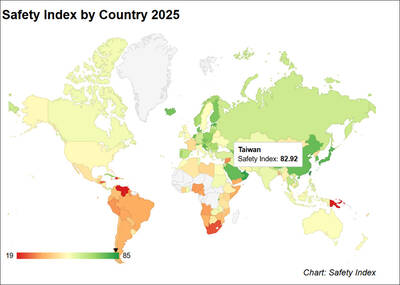Just two years after the SARS outbreak sent Asian economies into intensive care, companies across the region are bracing themselves for the vastly more malignant threat of a bird-flu pandemic.
The SARS crisis of 2003 killed about 800 people out of 8,000 cases and cost regional economies an estimated US$18 billion, according to the Asian Development Bank (ADB).
The hardest hit were Singapore, Hong Kong, China, Thailand, Vietnam, Taiwan and Malaysia. Travel-related industries were the most severely affected by the disease, which was spread by air passengers from China and Hong Kong.
But an avian-flu pandemic has the potential to kill millions worldwide and affect all economic sectors.
The ADB says in the Asia-Pacific region alone, the economic cost of a bird flu pandemic could exceed US$250 billion.
At the moment, the World Health Organization (WHO) says the bird flu threat is still in the third of six phases, with over 60 deaths recorded in Asia since 2003 and rare instances of suspected human-to-human infection.
Phase 6 is the doomsday scenario -- the full pandemic phase with sustained human-to-human infection in the general population.
"Phase 3, where we are now, is kind of the warning phase. It's out there, we know it's out there, we really have to pay attention. We have to plan," said Jeffrey Staples, senior medical adviser to emergency services firm International SOS.
"My guess is that at Phase 5, governments will probably impose international travel restrictions," he said in an interview.
"So what this gives us is a window of opportunity whereby we can consider moving people around in Phase 4," he said, referring to the possibility of relocating expatriate corporate staff out of affected countries.
"Phase 3 is probably too early to move people, but it's not too early to think and to start planning in a holistic way," he said.
With the virus now confirmed to have spread into Europe, companies across Asia are preparing emergency plans for a pandemic which is widely assumed to be only a matter of time.
Contingency measures ranging from free Vitamin C pills for workers and taking poultry off the canteen menu, to costly evacuation plans for expatriate staff and their families are being drafted by companies.
Nestle Malaysia said it was in the process of drafting a bird-flu contingency plan, with guidance from local authorities and its headquarters in Switzerland.
In China, Charles Zhang, public relations manager of Procter and Gamble in Guangzhou Province, said all staff had been urged to "pay attention to their personal health and bird-flu prevention measures."
P&G, which has 5,000 employees in China, 1 percent of them expatriates, is not stockpiling masks or shoe gloves and so far has no alternate plans for transport in case supply chains become bottled up.
There are no evacuation plans at the moment. Neither does the group have any stocks of anti-viral drug Tamiflu because in China, people needed to go to hospitals and get prescriptions from doctors, Zhang said.

AIR SUPPORT: The Ministry of National Defense thanked the US for the delivery, adding that it was an indicator of the White House’s commitment to the Taiwan Relations Act Deputy Minister of National Defense Po Horng-huei (柏鴻輝) and Representative to the US Alexander Yui on Friday attended a delivery ceremony for the first of Taiwan’s long-awaited 66 F-16C/D Block 70 jets at a Lockheed Martin Corp factory in Greenville, South Carolina. “We are so proud to be the global home of the F-16 and to support Taiwan’s air defense capabilities,” US Representative William Timmons wrote on X, alongside a photograph of Taiwanese and US officials at the event. The F-16C/D Block 70 jets Taiwan ordered have the same capabilities as aircraft that had been upgraded to F-16Vs. The batch of Lockheed Martin

GRIDLOCK: The National Fire Agency’s Special Search and Rescue team is on standby to travel to the countries to help out with the rescue effort A powerful earthquake rocked Myanmar and neighboring Thailand yesterday, killing at least three people in Bangkok and burying dozens when a high-rise building under construction collapsed. Footage shared on social media from Myanmar’s second-largest city showed widespread destruction, raising fears that many were trapped under the rubble or killed. The magnitude 7.7 earthquake, with an epicenter near Mandalay in Myanmar, struck at midday and was followed by a strong magnitude 6.4 aftershock. The extent of death, injury and destruction — especially in Myanmar, which is embroiled in a civil war and where information is tightly controlled at the best of times —

Taiwan was ranked the fourth-safest country in the world with a score of 82.9, trailing only Andorra, the United Arab Emirates and Qatar in Numbeo’s Safety Index by Country report. Taiwan’s score improved by 0.1 points compared with last year’s mid-year report, which had Taiwan fourth with a score of 82.8. However, both scores were lower than in last year’s first review, when Taiwan scored 83.3, and are a long way from when Taiwan was named the second-safest country in the world in 2021, scoring 84.8. Taiwan ranked higher than Singapore in ninth with a score of 77.4 and Japan in 10th with

China's military today said it began joint army, navy and rocket force exercises around Taiwan to "serve as a stern warning and powerful deterrent against Taiwanese independence," calling President William Lai (賴清德) a "parasite." The exercises come after Lai called Beijing a "foreign hostile force" last month. More than 10 Chinese military ships approached close to Taiwan's 24 nautical mile (44.4km) contiguous zone this morning and Taiwan sent its own warships to respond, two senior Taiwanese officials said. Taiwan has not yet detected any live fire by the Chinese military so far, one of the officials said. The drills took place after US Secretary